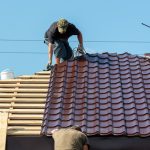Manufacturing products is the best solution to address many of the world’s ills. Production is enhanced by emerging new equipment that contributes to quantity and quality as well as speed. Precision stampings are machines served as fast and cost-effective solutions in the manufacture of large quantities of complex products.
Three major precision stamping applications
Currently used at factories worldwide are: micro-precision stamping, intricate precision metalwork, and prototype design.
- Micro-precision stamping
Micro-precision stamping machines support tools with minimum diameter capabilities from .002 inches and .005 inches. These micro-stamping combine photo etching technology and 3D computer software to perform highly exact operations.
- Intricate precision metalwork
Intricate precision metalwork is complex with innovative designs that require more sophisticated procedures. Companies offering this type of service have more experience and advanced technologies that enable them to fabricate products with intricate designs having exact specifications.
- Prototype design
Precision stampings companies offer prototype design service that does away with expensive dedicated tooling making the design and production cost-effective. The use of computer programming stamping equipment improves the turnaround time delivering same-day or next-day results.
Pros and Cons of Precision Stampings
Pros
- Highly automated
- Well-suited for high-volume
- Cost-effective
Cons
- Ineffective for smaller production runs
- Long lead times
Benefits of Micro Precision Stamping
- Risk reduction
- Speedy results
- Enhanced flexibility
Some of the technologies that make intricate precision metal working possible include:
- Extrusion and tapping
- Progressive die design
- Deep draw stampings
- Transfer stamping
- Class A dies
- Magnified optical devices
Types of Prototype Design
Two main processes involved are single-part transfer and progressive strip prototyping that entails the following process:
1. Single-part transfer prototyping process manually moved individual prototype parts from station to station where it is metal formed. The main advantage is its being eco-cost while disadvantages are high parts costs and the inability to incorporate miniature parts.
2. Progressive strip prototyping method is that a progressive die guides the contained stock prototype material through each step of the process. In every station, an operation is completed by the die as it delivers complete product at the final stage.
In Conclusion
The biggest advantage of precision stamping is its efficiency in cost. Due to reduction of processing time, it also reduces cut processing. Considering the estimated cost of production, cost benefits in precision stampings are still greater in many cases.
JTD Stamping provides Precision Stamping Services and produce precision washers of consistent quality and in a variety of options.








